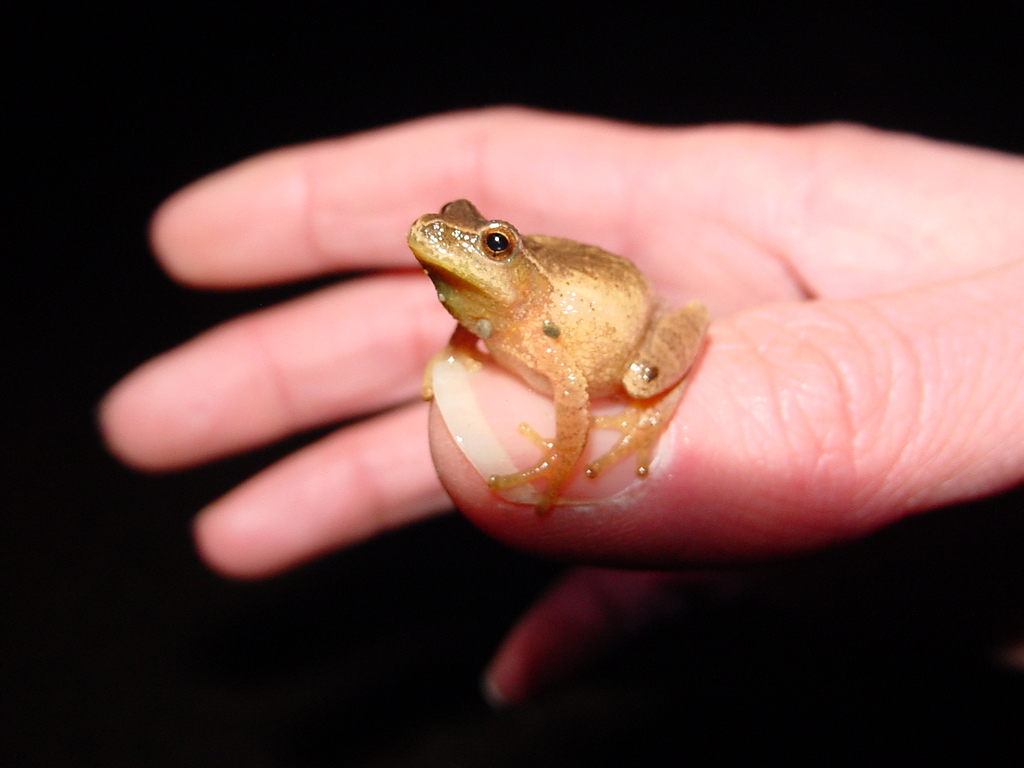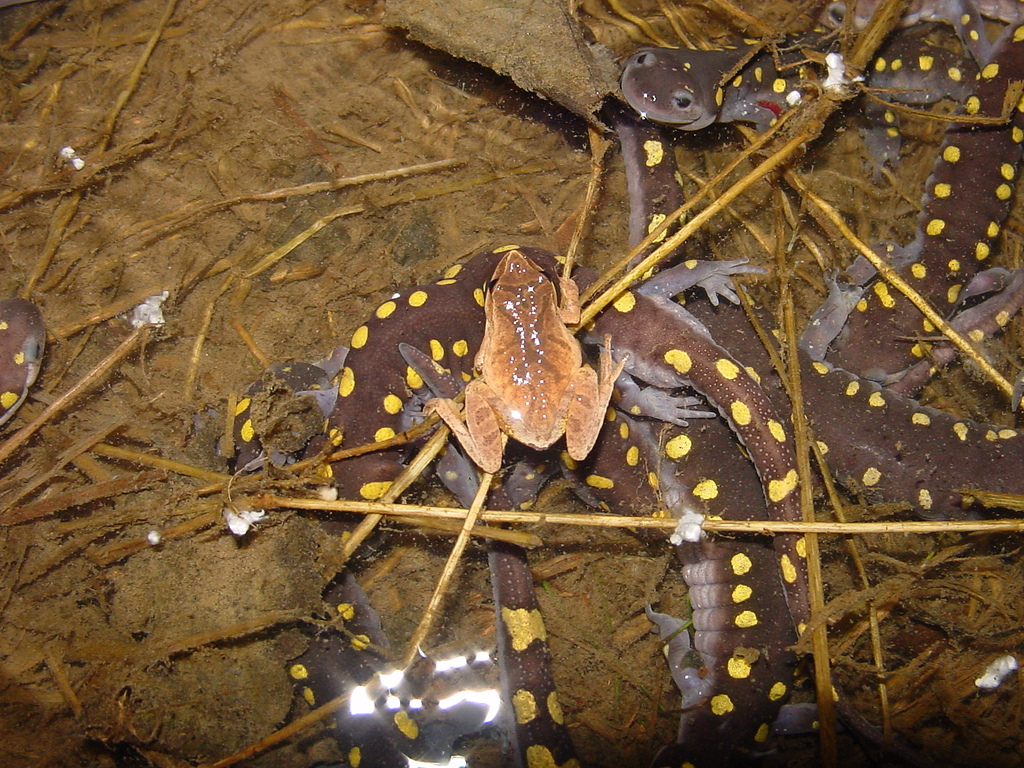They say you know spring is here when the peepers start peeping. That’s the Spring Peeper I’m talking about. As you could probably guess they are named the Spring Peeper because they are one of the first frogs to emerge and start calling; and after a long winter their song is like a herald, trumpeting for the return of spring.
Many know these frogs as just peepers. Their scientific name is Pseudacris crucifer and they are a tree frog that lives in our area as well as most of United States. Their habitat is moist wooded areas, fields and grasslands near ponds. Although they are a common frog, they are hard to find because of their superb camouflage and their incredibly small size. They are usually colored in shades of tan, brown, green, and grey and have lines that form an X on their back. They also have some ability to make themselves lighter or darker in color to better blend in with their surroundings.
Their skin is smooth like most amphibians and their belly is a cream color. Sometimes I even have a hard time believing how small they are. Especially after hearing how loud they can be! The Spring Peeper is only about 1 inch in size. To get some perspective they are about the size of a paperclip. No wonder they aren’t seen very much. Add that to the fact that they usually hide under leaf litter and you’ve got a near invisible frog.

Spring Peeper – photo by Tom LeBlanc
The Spring Peeper hibernates over winter by burying itself in soft mud near ponds. It has a unique ability to withstand some pretty cold temperatures and can even withstand freezing during hibernation. As the fall comes to an end and the cold temperatures of winter begin, a special change starts to happen inside the peeper’s body. Sugars begin to group together inside the cells and form a natural antifreeze. While this is happening the cells begin to expel much of their water so that when ice does form it is stuck in the small spaces between the cells where the sharp edges won’t damage any of the frog’s organs. Although they have this incredibly ability, it only works until the temperatures reach 21° F. After this temperature the Spring Peeper would die which is why they need to bury themselves under blankets of mud and leaves.
Being some of the first frogs to emerge and start calling for mates takes some preparation. The males begin to ready their body before hibernation and sometimes they are so ready they will even begin calling before winter hits. In about mid-March, and sometimes earlier, they awake from their cozy warm mud beds and start to gather near vernal pools and ponds. Now is the moment that they truly become that which they are named for. The males begin peeping, calling for a mate. They continue for hours, louder and faster until they find a mate. The louder and faster they call the better chance they have of reproducing. They are heard the best on wet, warm nights and they will usually sing in trios with the deepest-voiced frog starting first.

Spring Peeper on top of Spotted Salamanders – photo by Tom LeBlanc
Once the male succeeds in attracting a female, she will lay around 1,000 eggs that she sticks to underwater plants and the male will fertilize them as she lays them. Since they are so small it does not take long for them to grow in the egg. In warmer temperatures they can hatch in as little as 2 days, but they usually take longer, and may take up to a couple weeks. The tadpoles emerge and eat algae and other water plants. Over the course of the next few months the tadpoles metamorphose into adults. They leave the water and begin their life on the forest floor. As an adult they eat an array of insects such as beetles, spiders, ants and flies. The adults live for about three years, unless they freeze over winter, or get eaten by a predator.
It is great to hear the Spring Peepers in the evening and at night peeping away. Although I enjoy winter, those peepers give me this warm, fuzzy, happy feeling. I know that even though there will still be some colder days, the warm weather is right around the corner and that it is time for things to grow and be lively again, including me. So get out there, take advantage of those warmer days and soon-to-be warmer nights. Revel in the call of the Spring Peepers and get ready to watch the natural world come to life around you.
Audubon Community Nature Center builds and nurtures connections between people and nature. Hike the trails the see plenty of spring coming to life, perhaps even Spring Peepers. The trails are open daily from dawn to dusk. The Nature Center is open daily from 10 a.m. until 4:30 p.m. except Sundays when it opens at 1 p.m. Visit auduboncnc.org or call (716) 569-2345 for more information.
Carly Polisoto is the Seasonal Naturalist at ACNC.


Recent Comments